
The Israeli West Bank barrier or wall is a separation barrier in the West Bank or along the Green Line. Israel considers it a security barrier against terrorism, while Palestinians call it a racial segregation or apartheid wall. At a total length of 708 kilometres (440 mi) upon completion, the border traced by the barrier is more than double the length of the Green Line, with 15% running along it or in Israel, while the remaining 85% cuts at times 18 kilometres (11 mi) deep into the West Bank, isolating about 9% of it, leaving an estimated 25,000 Palestinians isolated from the bulk of that territory.
The Cremisan Valley is a valley located on the seam line between the West Bank and Jerusalem.
The International law bearing on issues of Arab–Israeli conflict, which became a major arena of regional and international tension since the birth of Israel in 1948, resulting in several disputes between a number of Arab countries and Israel.

Beit El is an Israeli settlement and local council located in the Binyamin Region of the West Bank. The Orthodox Jewish town is located in the hills north of Jerusalem, east of the Palestinian city of al-Bireh, adjacent to Ramallah. In September 1997, Beit El was awarded local council status. The head of the local council is Shai Alon. In 2017 its population was 6,101. Its current population is 6,500 residents.

The Israeli-occupied territories refers to the territories occupied by Israel during the Six-Day War of 1967 and sometimes also to areas of Southern Lebanon, where Israeli military was notably present to support local Lebanese militias during the civil war and after it. Originally, those territories included the Syrian Golan Heights, the Egyptian Sinai Peninsula and Egyptian-occupied Gaza Strip and Jordanian-annexed West Bank. The first use of the term 'territories occupied' was in United Nations Security Council Resolution 242 following the Six-Day War in 1967, which called for "the establishment of a just and lasting peace in the Middle East" to be achieved by "the application of both the following principles: ... Withdrawal of Israeli armed forces from territories occupied in the recent conflict ... Termination of all claims or states of belligerency" and respect for the right of every state in the area to live in peace within secure and recognized boundaries. In addition to the territories occupied following the Six-Day War, Israel also occupied portions of Southern Lebanon following the 1982 Lebanon War, and maintained a military presence there until withdrawing in 2000.
The status of territories captured by Israel refers to the status of the Gaza Strip, the West Bank, the Western Golan Heights and the Sinai Peninsula, captured by Israel on the course of the 1967 Six-Day War.

Dorit Beinisch was the 9th president of the Supreme Court of Israel. Appointed on September 14, 2006, after the retirement of Aharon Barak, she served in this position until February 28, 2012. She was the first woman to serve as president of the Israeli Supreme Court.
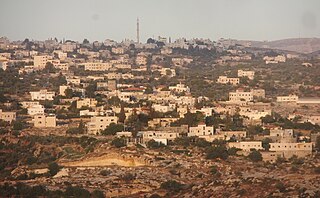
Bil'in is a Palestinian village located in the Ramallah and al-Bireh Governorate, 12 kilometres (7.5 mi) west of the city of Ramallah in the central West Bank. According to the Palestinian Central Bureau of Statistics, Bil'in has a population of 1,800, mostly Muslims. It is internationally known for protests against the Israeli occupation and the community leader, Abdullah Abu Rahmah, who heads the weekly protests, is under indictment for what the prosecution has called the 'ideological crime' of taking illegal actions on the West Bank.

The Military Advocate General assists the Israel Defense Forces in imposing rules of conduct through legal advice, legal instruction, maintaining the mechanisms for military prosecution and legal defense, and fulfilling special legal tasks. It supervises, by exercising the designated operative instruments and authority, over the rule of law in the IDF.
The Israeli apartheid analogy compares Israel's treatment of Palestinians to South Africa's treatment of non-whites during its apartheid era within the context of the crime of apartheid.
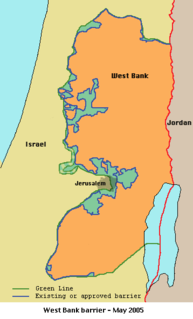
Seam Zone is a term used to refer to a land area in the Israeli-occupied West Bank located east of the Green Line and west of Israel's separation barrier, populated largely by Israelis in settlements such as Alfei Menashe, Ariel, Beit Arye, Modi'in Illit, Giv'at Ze'ev, Ma'ale Adumim, Beitar Illit and Efrat.

Beit HaShalom, or the Rajabi House, also known as Beit HaMeriva, is a four-story apartment building located in the H-2 Area of Hebron.
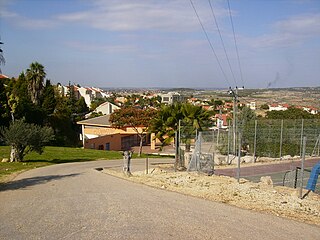
Tzufim, or Tzufin, is an Israeli settlement in the West Bank. Located in the Samarian mountains, north of Alfei Menashe and Qalqilyah and northeast of Kfar Saba, it is organised as a community settlement and falls under the jurisdiction of Shomron Regional Council. In 2017 it had a population of 2,188.

Migron is an Israeli settlement in the Binyamin Region of the West Bank, located within 2km of a former outpost by the same name, that was relocated to its present site on Sept. 2, 2012. The outpost was located 14 kilometers north of Jerusalem, it fell under the jurisdiction of the Mateh Binyamin Regional Council. It was the largest outpost of its kind, with a population of 300. The council says it was founded in 1999 and re-founded in 2001, on land registered before 1967 by the villagers of Burqa. The Israeli government contributed NIS 4.3 million from the Construction and Housing Ministry to build Migron. The international community considers Israeli settlements in the West Bank illegal under international law, but the Israeli government disputes this.

Beit Surik is a Palestinian village in the Jerusalem Governorate, located 12 kilometers Northwest of Jerusalem in the northern West Bank. According to the Palestinian Central Bureau of Statistics, the town had a population of 3,818 in 2006.
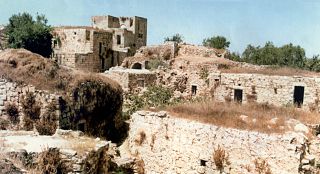
Beit 'Anan is a Palestinian village in northwest Jerusalem. In 2010, it had a population of 4,982. Some residents of Beit 'Anan hold Israeli identity cards, while others hold Palestinian identity cards.

Hanan Melcer is an Israeli judge who currently serves as a justice on the Supreme Court of Israel, and as of October 2017, Deputy Chief Justice.

Worshippers Way or Prayers Road in Hebron, West Bank is a road linking the Israeli settlement of Kiryat Arba with the Cave of the Patriarchs and with the Jewish settlements in Hebron. The road is used by Israelis and tourists who visit the Cave and the Old City of Hebron. Palestinians are denied vehicular use of the road. The road was expanded after an ambush near Kiryat Arba that took place in November 2002. The expansion required that adjacent Palestinian land be expropriated, which resulted in a legal battle. A number of buildings of architectural and historical value, dating back to the Mamluk-Ottoman period, were also expropriated and destroyed.
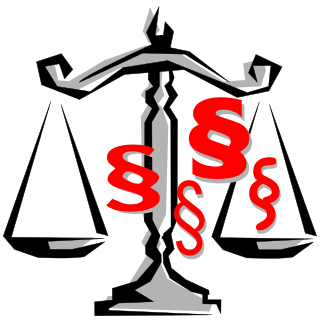
Mohammad Alamarin v. IDF Commander in Gaza Strip was a 1992 case argued before Israel's High Court of Justice. Justice G. Bach delivered the majority opinion. Mohammad Alamarin filed a petition seeking to prevent the confiscation and demolition of his family's home after his son confessed to murdering 15 year old Helena Rapp. The HCJ held that the IDF commander acted within his authority under r.119 of the Defence (Emergency) Regulations when he ordered the demolition of the petitioner's sons home.























